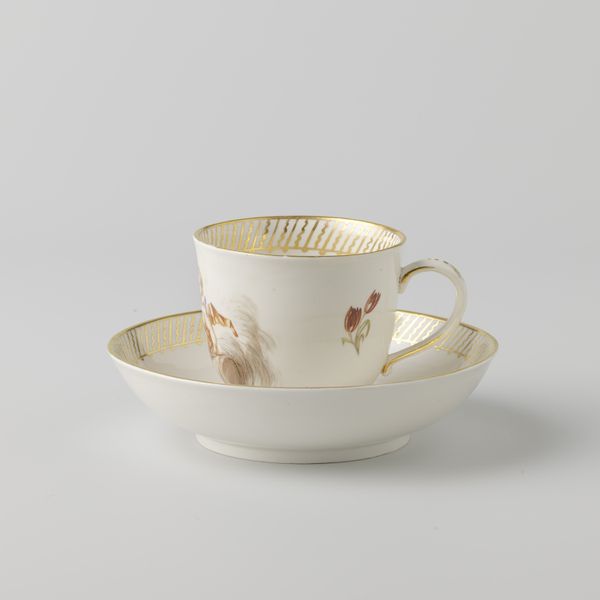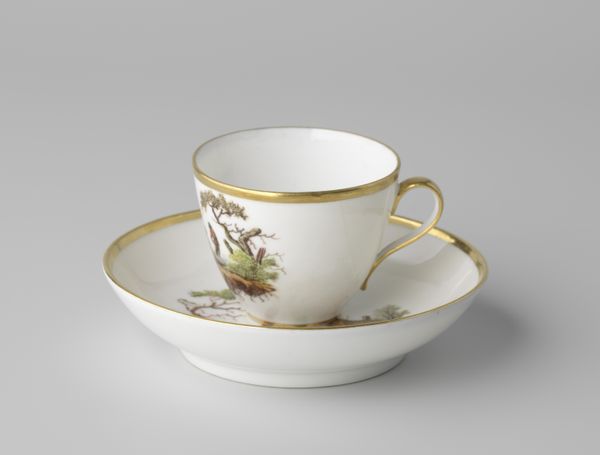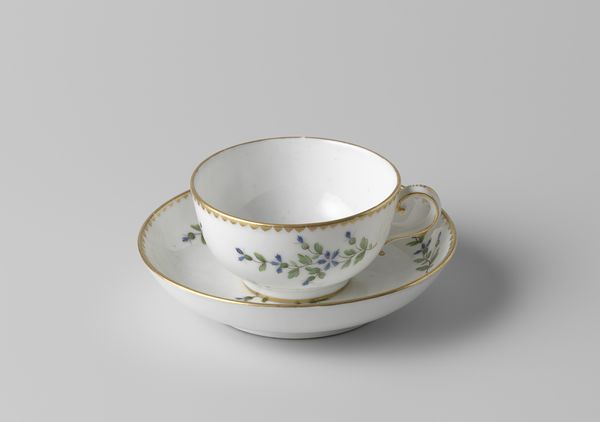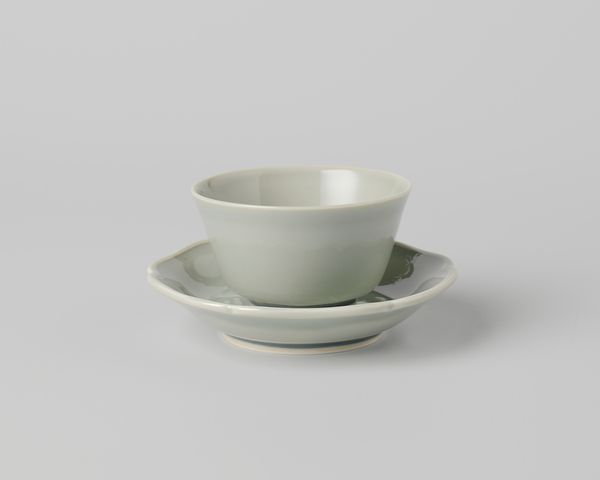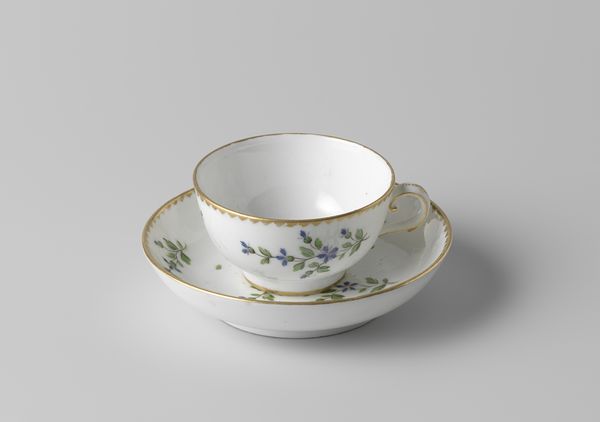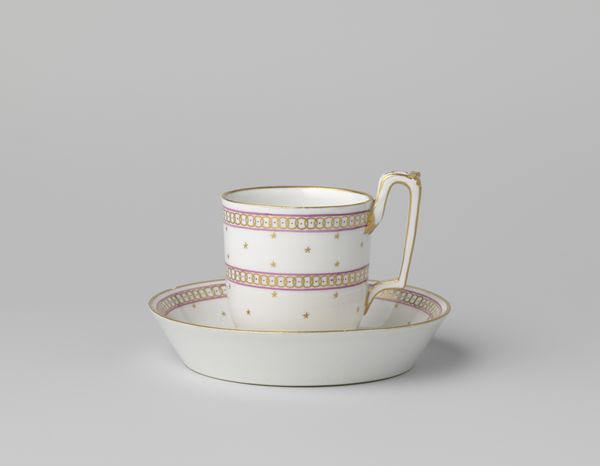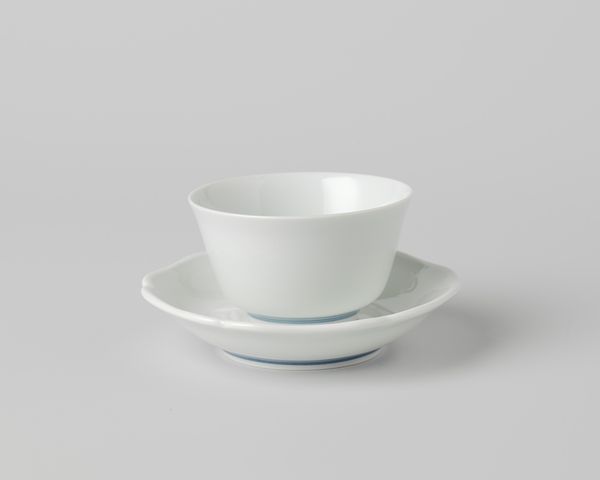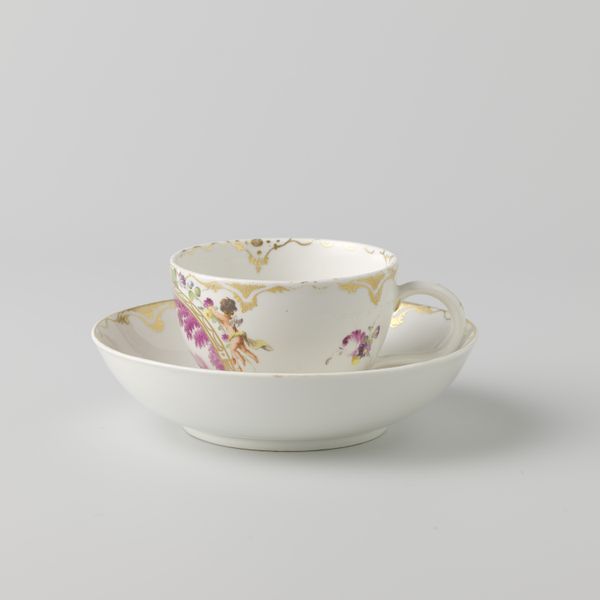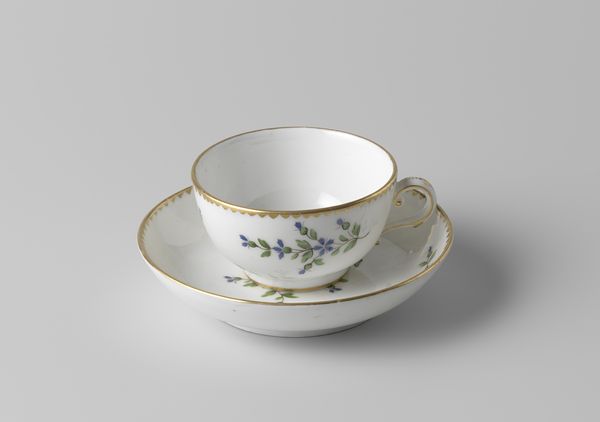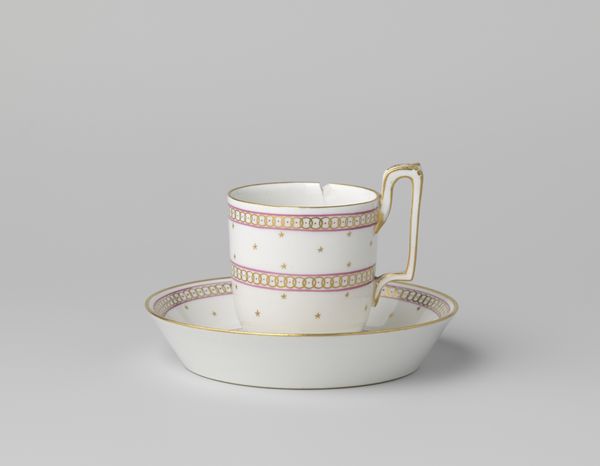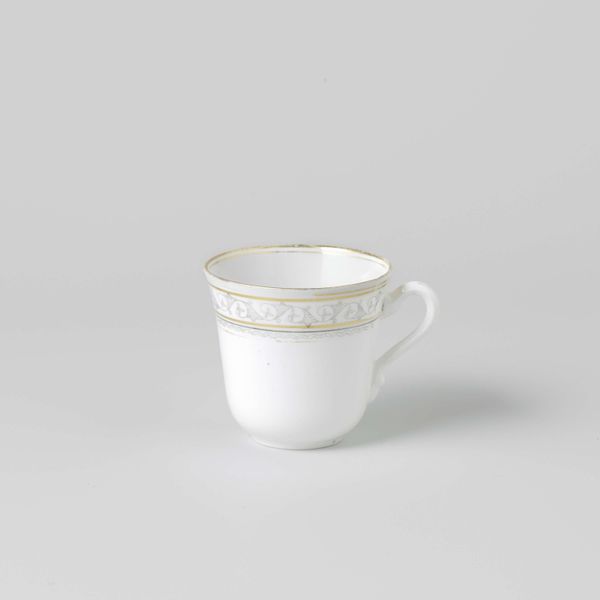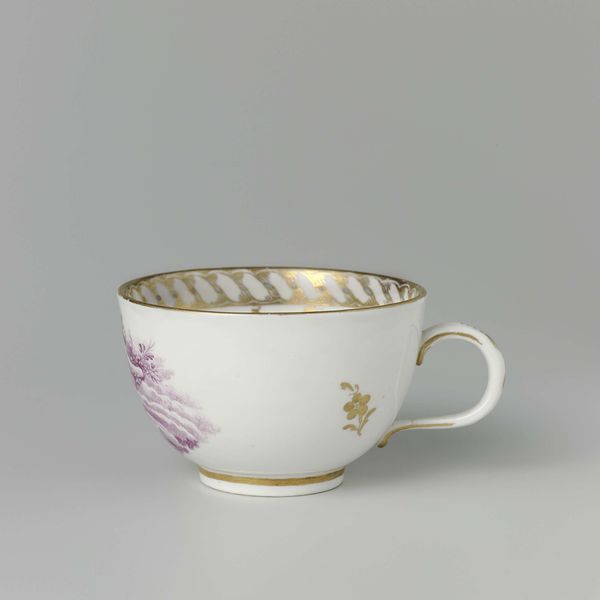
gold, ceramic, porcelain
#
neoclacissism
#
gold
#
ceramic
#
porcelain
#
decorative-art
Dimensions: height 5.8 cm, diameter 7.9 cm, diameter 4.1 cm, width 9.5 cm
Copyright: Rijks Museum: Open Domain
Curator: Before us is a porcelain cup with a matching saucer. It's believed to have been crafted sometime between 1808 and 1815 and is identified as "Cup with King William I". It's currently part of the Rijksmuseum's collection. Editor: My first impression is its surprising simplicity. The restrained decoration against the stark white porcelain—there's an elegant purity to it. Curator: Indeed. The lines are clean and refined, adhering strongly to Neoclassical principles. Note the circular forms throughout – in the cup’s lip, the curve of the handle, the saucer’s base, all harmonizing. The use of gold as the only decorative element really emphasizes its formal structure. Editor: Yes, the gold trim feels… calculated. It isn't merely ornamental, but seems deliberately placed to enhance the whiteness of the porcelain, to call attention to the form itself, and possibly to signify power and wealth in a restrained fashion. It certainly says something about the social aspirations of its owner. Was it meant for everyday use? Curator: Unlikely. Pieces such as this often had a symbolic value, far beyond mere functionality. Although we refer to it as "Cup with King William I", the king is not directly featured as a portrait, but as a possible reference to the shift in the social, political and economical powers, as luxury objects became signifiers of new social hierarchies. Editor: Right. Luxury objects acquired new meaning beyond the domestic context, and functioned to reaffirm a specific moment in history. So how did the market function in order for a porcelain cup to become a carrier of social meaning? Curator: The Dutch state’s porcelain manufacturers strategically appealed to the growing demand of local symbolic, non-aristocratic elites for a visual language able to evoke authority through controlled aesthetic displays and signifiers. This cup showcases this tension. Editor: So much contained in something we might otherwise overlook! The careful balance of form, material, and context really exemplifies how decorative arts can be just as informative as other historical artifacts. Curator: Exactly, and as you pointed out earlier, sometimes, simplicity itself speaks volumes. It's the refined details that really count.
Comments
No comments
Be the first to comment and join the conversation on the ultimate creative platform.

